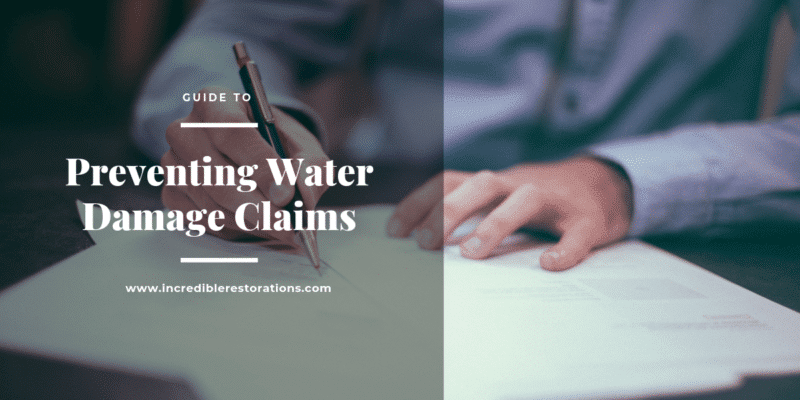When we buy home insurance, the last thing we want to do is file a claim.
Protecting our families and our homes are our first priority and we do whatever we can to ensure our safety and well being.
However, having to claim insurance comes when you least expect…
Understanding common water damage disasters is crucial for Homeowners.
According to Square One Insurance, water damage has become the leading cause of home insurance claims in Canada.
Water damage accounts for 45% of all home insurance claims, which is more than theft and fire damage combined.
Water damage is frustrating enough as it is and can be even deadlier in condos.
Pipes bursting in condos can leak water into every floor and can substantially increase the cost of water damage repair.
Water damage from plumbing and appliance issues make up 60% of the water damage claims.
Most home insurance policies cover accidental water damage from burst pipes, leaky appliances, or backed up drains. However, enhanced home insurance can cover things like groundwater & sewer backup, above groundwater, and even swimming pools.
Broken pipes can release thousands of liters of water in an hour, and are more common during winter months. However, it’s important to be aware during warmer months as well. Make sure you learn how to inspect your home for water damage before it spirals out of control.
Easy Ways
To Prevent Water Damage
In Your Home:
1. Never turn on your dishwasher or washing machine when you’re not home.
Water damage from appliances is more common than you think.
Washing machine and dishwasher supply hoses burst from long-term stress and continue to flood your home while you’re away.
Don’t turn them on while you’re gone to prevent water damage from your appliances.
2. Clean gutters and exterior drains to prevent clogging and backflow.
Cleaning your gutters helps prevent water from building up and leaking into your roof.
By keeping your external drains clear you can prevent backflow and a buildup of water around your home.
3. Learn where your water shutoffs are located and how to use them.
If you’re experiencing overflows or burst pipes, turn the water off from the source.
Locating shutoffs and knowing how to use them beforehand is crucial to save time and stop the water immediately.
4. Replace plastic dishwasher and washing machine hoses with braided Stainless-steel hoses.
Some dishwashers and washing machine hoses may be made of rubber or plastic which could break over time.
By switching over to braided stainless-steel hoses, water can expand within the hoses and prevent water damage.
5. Store important documents in heavy-duty waterproof bins.
In case of flooding or water damage, store your important documents (passports, birth certificates) in waterproof bins.
This can prevent more headaches during annoying water damage situations.
6. Raise electronics off the floor.
In case of a flood, try and keep all your electronics off the floor.
Damaged electronics can cost up to thousands to replace and are a headache to claim through insurance.
For more tips on how to deal with water damage in your home, click here.
By staying prepared and knowing exactly what to do with water damage, we’ll be able to confidently protect our homes and call a reputable water damage restoration company when we need help.

